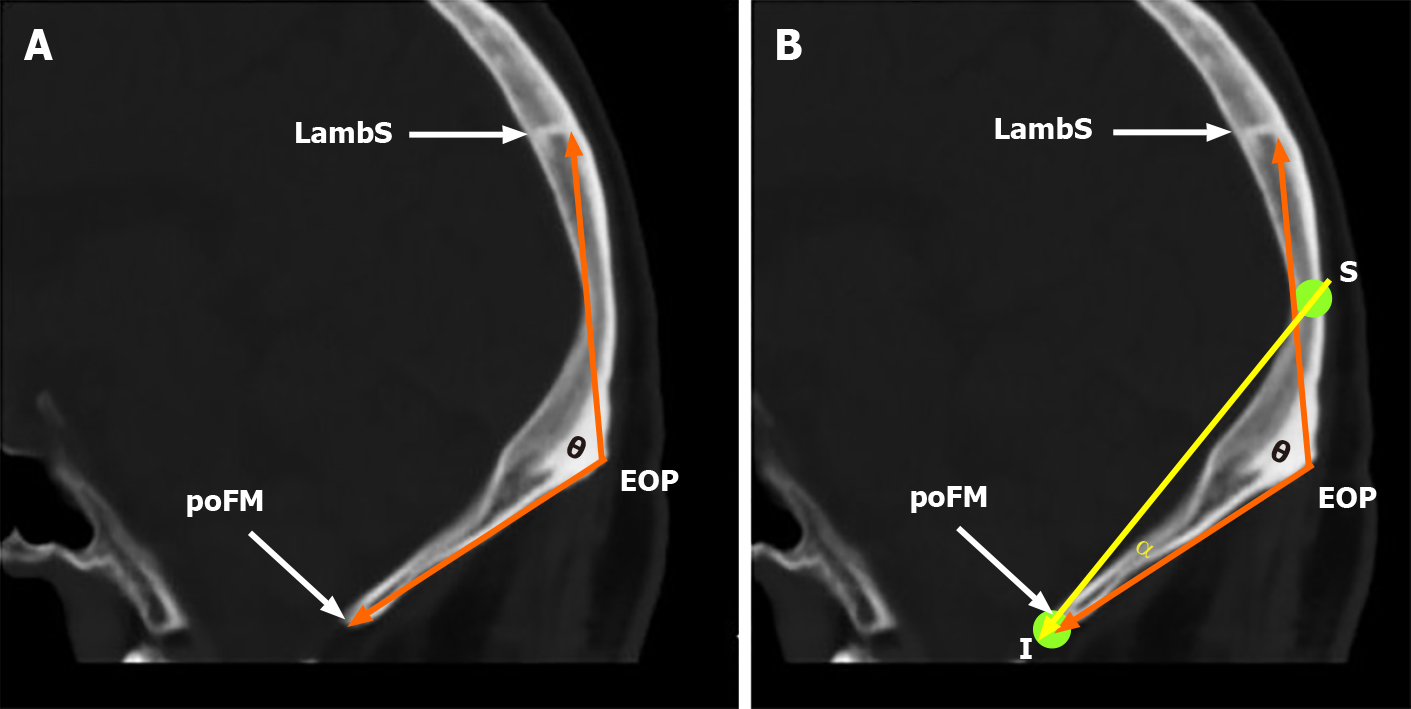Copyright
©The Author(s) 2022.
World J Clin Cases. Jan 14, 2022; 10(2): 477-484
Published online Jan 14, 2022. doi: 10.12998/wjcc.v10.i2.477
Published online Jan 14, 2022. doi: 10.12998/wjcc.v10.i2.477
Figure 2 Schematic representation of the angle of the squamous part of the occipital bone and the operative angle for the supra- and infratentorial epidural hematoma on the median sagittal plane of the computed tomography scan.
A: The angle of the squamous part of the occipital bone, symbolized as θ, was defined between two orange arrow lines from the external occipital protuberance (EOP) to the lambdoid suture (LambS) and to the posterior edge of the foramen magnum (poFM), respectively. The EOP is located at the level of the transverse sinus; B: The “S” denotes the midpoint between the EOP and the LambS; the “I” denotes the point of the poFM. The α represents the operative angle for the supra- and infratentorial epidural hematoma. As the θ is less than 180, the angle α is not equal to zero. EOP: External occipital protuberance; LambS: Lambdoid suture; poFM: Posterior edge of the foramen magnum.
- Citation: Li RC, Guo SW, Liang C. Modified surgical method of supra- and infratentorial epidural hematoma and the related anatomical study of the squamous part of the occipital bone. World J Clin Cases 2022; 10(2): 477-484
- URL: https://www.wjgnet.com/2307-8960/full/v10/i2/477.htm
- DOI: https://dx.doi.org/10.12998/wjcc.v10.i2.477









